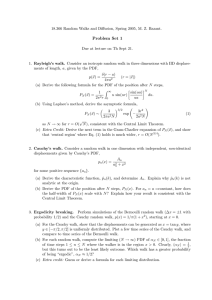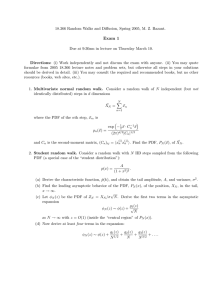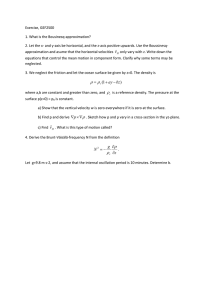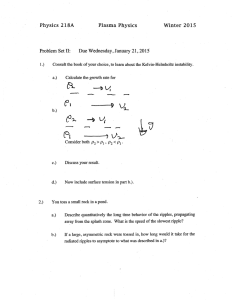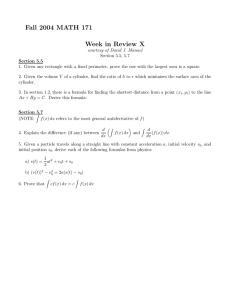Random Walks & Diffusion Problem Set - University Level
advertisement
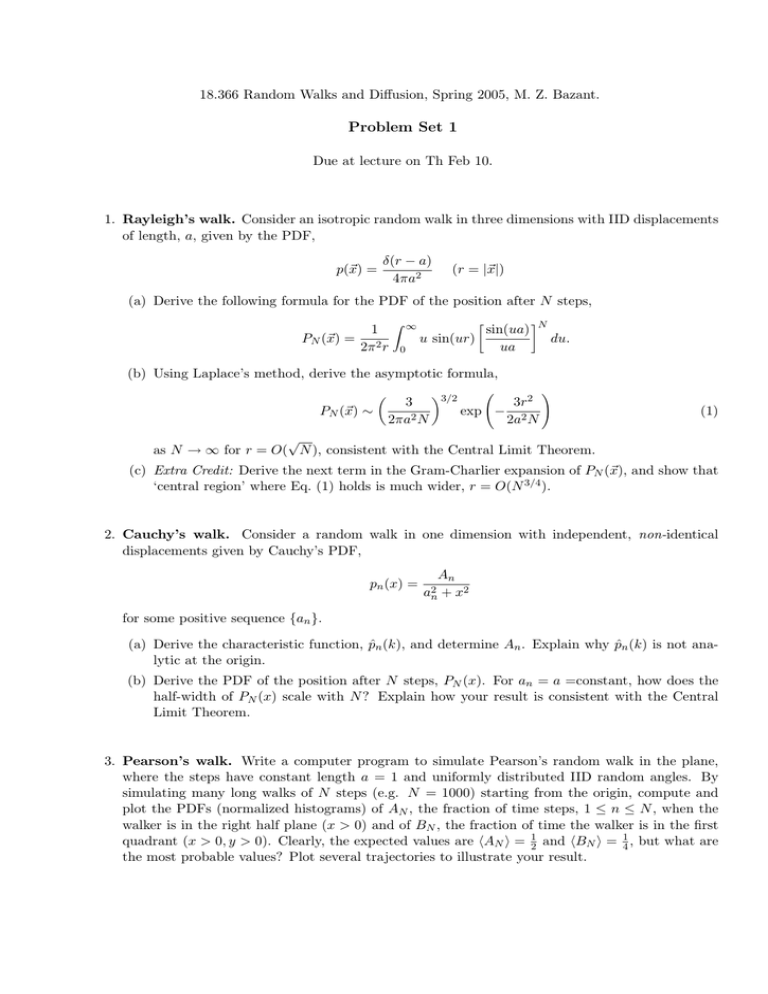
18.366 Random Walks and Diffusion, Spring 2005, M. Z. Bazant.
Problem Set 1
Due at lecture on Th Feb 10.
1. Rayleigh’s walk. Consider an isotropic random walk in three dimensions with IID displacements
of length, a, given by the PDF,
p(�x) =
δ(r − a)
4πa2
(r = |x|)
�
(a) Derive the following formula for the PDF of the position after N steps,
1
PN (�x) = 2
2π r
�
∞
0
sin(ua)
u sin(ur)
ua
�
�N
du.
(b) Using Laplace’s method, derive the asymptotic formula,
�
PN (�x) ∼
3
2πa2 N
�3/2
�
3r2
exp − 2
2a N
�
(1)
√
as N → ∞ for r = O( N ), consistent with the Central Limit Theorem.
(c) Extra Credit: Derive the next term in the Gram­Charlier expansion of PN (�x), and show that
‘central region’ where Eq. (1) holds is much wider, r = O(N 3/4 ).
2. Cauchy’s walk. Consider a random walk in one dimension with independent, non­identical
displacements given by Cauchy’s PDF,
pn (x) =
a2n
An
+ x2
for some positive sequence {an }.
(a) Derive the characteristic function, pˆn (k), and determine An . Explain why pˆn (k) is not ana­
lytic at the origin.
(b) Derive the PDF of the position after N steps, PN (x). For an = a =constant, how does the
half­width of PN (x) scale with N ? Explain how your result is consistent with the Central
Limit Theorem.
3. Pearson’s walk. Write a computer program to simulate Pearson’s random walk in the plane,
where the steps have constant length a = 1 and uniformly distributed IID random angles. By
simulating many long walks of N steps (e.g. N = 1000) starting from the origin, compute and
plot the PDFs (normalized histograms) of AN , the fraction of time steps, 1 ≤ n ≤ N , when the
walker is in the right half plane (x > 0) and of BN , the fraction of time the walker is in the first
quadrant (x > 0, y > 0). Clearly, the expected values are �AN � = 12 and �BN � = 14 , but what are
the most probable values? Plot several trajectories to illustrate your result.
